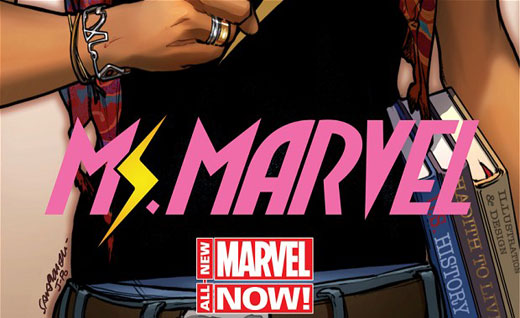
Marvel Comics, the company that brought us Spider-Man, X-Men, Iron Man, and the Avengers, has, as of late, been making some significant advances in racial and cultural diversity within its comics. Case in point: Marvel has introduced a new Ms. Marvel, who happens to be a 16 year-old Pakistani-American, and the first Muslim superheroine to star in her own mainstream ongoing series.
The new Ms. Marvel is Kamala Khan, who hails from Jersey City, New Jersey and possesses shapeshifting powers. She will reportedly struggle with her religion, being a Middle Eastern woman in post-9/11 America, dealing with her conservative brother, and, of course, facing off against supervillains.
Marvel editor-in-chief Axel Alonso remarked, “At her core, Kamala is just a 16 year-old girl exploring the many facets of her identity when she is suddenly bestowed with superhuman powers that send her on the adventure of a lifetime.”
G. Willow Wilson, who will write the series, added, “I wanted Ms. Marvel to be true-to-life, something people – particularly young women – could relate to. It’s for all the geek girls out there, and everybody else who’s ever looked at life from the fringe.” She also admitted, “Any time you do something like this, it’s a bit of a risk. You’re trying to bring the audience on board and they are used to seeing something else in the pages of a comic book.”
But today’s comic book readers seem more accepting of diversity and equality, especially considering the fact that over at DC Comics (Batman, Superman, Arrow), the mantle of the popular hero Green Lantern was taken up by Simon Baz, a male Muslim from Dearborn, Michigan. That character’s creator, Geoff Johns, is himself a Lebanese-American from Dearborn. He said that the public’s reaction to the new Green Lantern “continued to reinforce the fact that our readership is extremely diverse. So we want to continue to diversify the characters in our universe.”
The new Muslim Ms. Marvel and Green Lantern are major leaps forward. Here are some other heroes that have become shining examples of diversity:
Ultimate Spider-Man / Miles Morales
The half-Black, half-Hispanic Morales took on the role of the new Spider-Man in Marvel’s Ultimate comics (which take place in a separate universe from the mainstream Spider-Man). This happened after the Ultimate version of Peter Parker died, and fans’ reaction to the newer, younger web-slinger was largely positive. “What you have is a Spider-Man for the 21st century who’s reflective of our culture and diversity,” said Alonso.
Batwoman / Kate Kane
Originally introduced as a Batman supporting character in 1956, she was revamped in 2005 as a Jewish lesbian, and began starring in her own monthly series. She is today considered one of the most high-profile gay comic book heroines, and DC Comics received praise for the series from LGBT magazines such as Out and organizations like GLAAD.
Dust / Sooraya Qadir
A lesser-known Muslim female that preceded the new Ms. Marvel, the Afghani-born Dust was introduced as a member of the X-Men in 2002. In her backstory, she escaped from slave traders in the Middle East by using her mutant powers.
Northstar / Jean-Paul Beaubier & Kyle Jinadu
In what was Marvel Comics’ very first interracial gay marriage, the two heroes (Jean-Paul a Canadian and Kyle an African-American) tied the knot in Astonishing X-Men in 2012. Of that development, GLAAD president Herndon Graddick remarked, “When a major comic publisher not only includes, but celebrates, the legal wedding of two of its gay characters, it reflects how supporting same-sex couples has become the new normal.” After all, he concluded, “Readers expect to see their realities portrayed in these fictional worlds.”
As for the new Ms. Marvel, Kamala Khan will officially debut in her own series in February 2014.
Photo: AP









